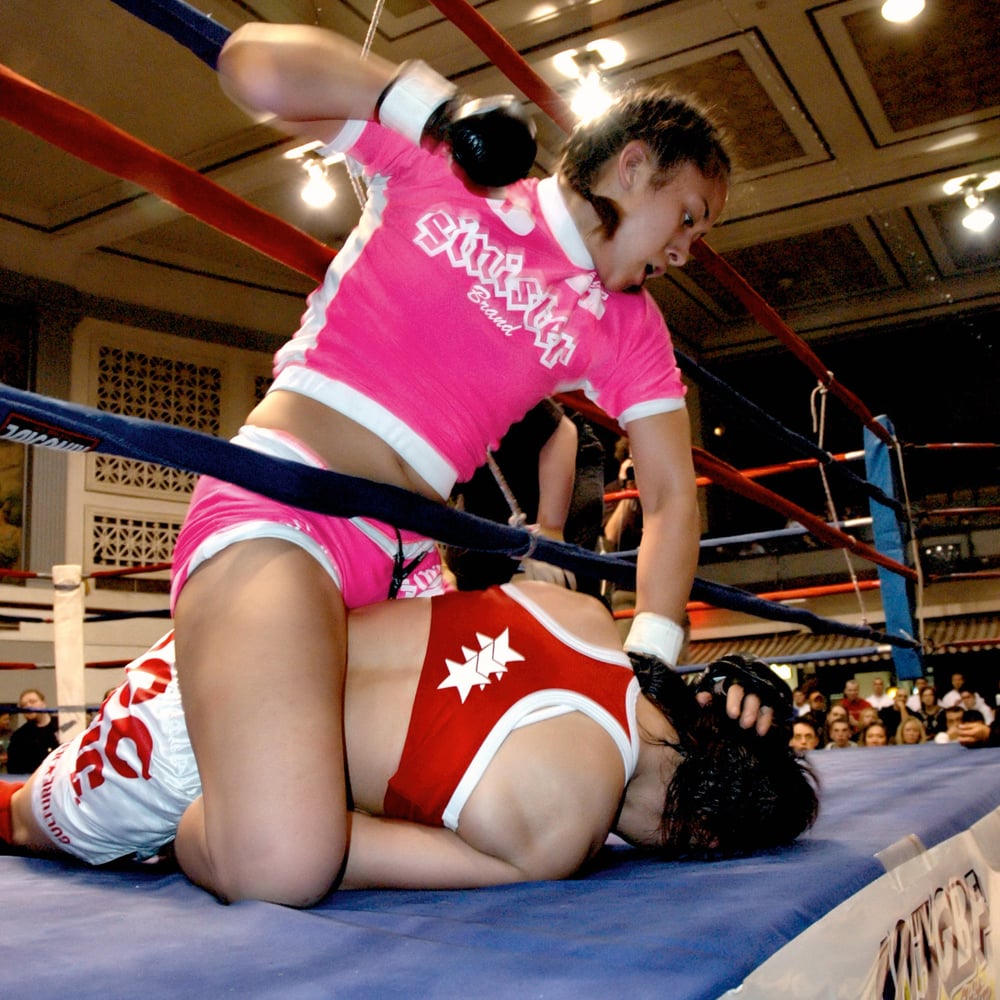
Issue 046
February 2009
Rash guards provide a good compromise between wearing a T-shirt and going topless, writes Rosi Sexton.
Why use them?
T-shirts add friction that prevents you from escaping a submission, get stretched and twisted and end up in all kinds of undignified positions and soak up sweat – not to mention there’s always the possibility of getting a finger or toe caught in the cloth. Going topless may be good for showing off your six-pack (or not!) but increases your exposure to skin infections and can leave you with mat burn in places. Training shirtless is often frowned upon in the gym and is usually reserved for pre-fight training only.
When would you use them?
When training in submission grappling, no-gi Brazilian Jiu Jitsu, wrestling or MMA. Often they can be worn in grappling competitions and are even seen in MMA, especially among female competitors.

Fabric
Likely to be some combination of nylon, polyester and spandex (lycra). Different combinations will vary in how they feel, their stretchiness and their ability to ‘wick’ moisture away from your skin. Some rash guards boast anti-microbial fabric, which may help to keep it sweet smelling for longer.
Fit
Some people prefer a skintight rash guard, while others are happier with a looser fit. Some styles lend themselves better to being worn one way or the other. The cut of the fabric is also important, as this affects how likely the rash guard is to bunch up when training or fighting. It’s hard to tell without actually training in it how it will perform, so be prepared to go through a few different rash guards before you find one you really like.
Short or long sleeves?
This is largely a matter of personal preference. Some find that short sleeves give a greater sense of freedom when moving around. On the other hand, long sleeved rash guards offer slightly better protection against skin infections and stop you getting mat burn on your elbows.
Logos
Some people like logos, others don’t. They come glued on, screen-printed or embroidered. Glued on logos start to peel very quickly. Screen printed logos last better, but may still fade. Embroidered logos are the most durable, yet risk irritating your skin.
Stitching and seams
Many rash guards have flat-lock stitching, ensuring that the seams sit flat against your body and don’t rub. Some people swear by it, others claim not to notice much difference. Where possible check the quality of the seams and stitching before you buy.

The technology of rash guards
Grapple Wear’s Parhom Rahravan breaks down how their rash guards are made
A rash guard needs to be comfortable, like a second skin. Our rash guards are made from a mix of polyester-based cloth and spandex, but there are many different variations. We use a type that has an anti-bacterial substance infused into the fabric. It might not stop you smelling, but to an extent it will stop fungal growth, if you leave it in your kitbag for example.
The fabric is very breathable, moisture will travel through the fabric and away from body. That’s why you wear it so tight – it’s not just for the comfort. If it’s not on the skin, it’s not able to pull the sweat away. A rash guard won’t get in your way, you won’t get somebody’s foot stuck on you. Cotton t-shirts always go loose and they get heavy when they get wet. If you cover more of your skin, you’re less at risk of catching ringworm or other skin diseases.
Before going into production we experiment with different sources. We tested and played around with many different variations and we continually try to tweak and improve our designs. The new range of rash guards are very light, comfortable and strong.
All of our designs have been printed with a sublimation method (rather than screen printing) to ensure they don’t peel and flake off after a while. We’ve moved away from screen printing for two reasons. The screen print cracks after a while and looks crap, and when you put a layer of print onto the rash guard, it takes away the breathability – you’re covering the fabric with a layer of plastic. The base cloth is white, and we dye the whole thing, so the design is part of the cloth and will last for as long as the rash guard and never peel off.

GENERAL TIPS
What’s the difference between a surf rash guard and a grappling rash guard?
In most cases probably not a lot. Some grappling rash guards are simply re-branded surf wear. Some surf rash guards may be designed to retain heat, instead of cooling you down, but it’s arguable how much difference you’ll notice in practice. Surf rash guards tend to have higher necks that can be uncomfortable when grappling.
What’s the advantage of buying a fight wear rash guard versus a generic sports compression shirt?
Not much really. Some people prefer the fight wear image, and feel that by buying from fight wear manufacturers they are supporting the sport.
Don’t be smelly
Your rash guard should come with washing instructions. Most can be machine-washed on a cold or cool setting. The cautious prefer to hand wash, and tumble-drying is definitely best avoided. If you wash your rash guard immediately after training, it will be less likely to retain nasty smells. Getting rid of lingering odours can be difficult. Soaking in cold water and detergent before washing may help, and some have suggested adding vinegar or sodium bicarbonate to the wash.










